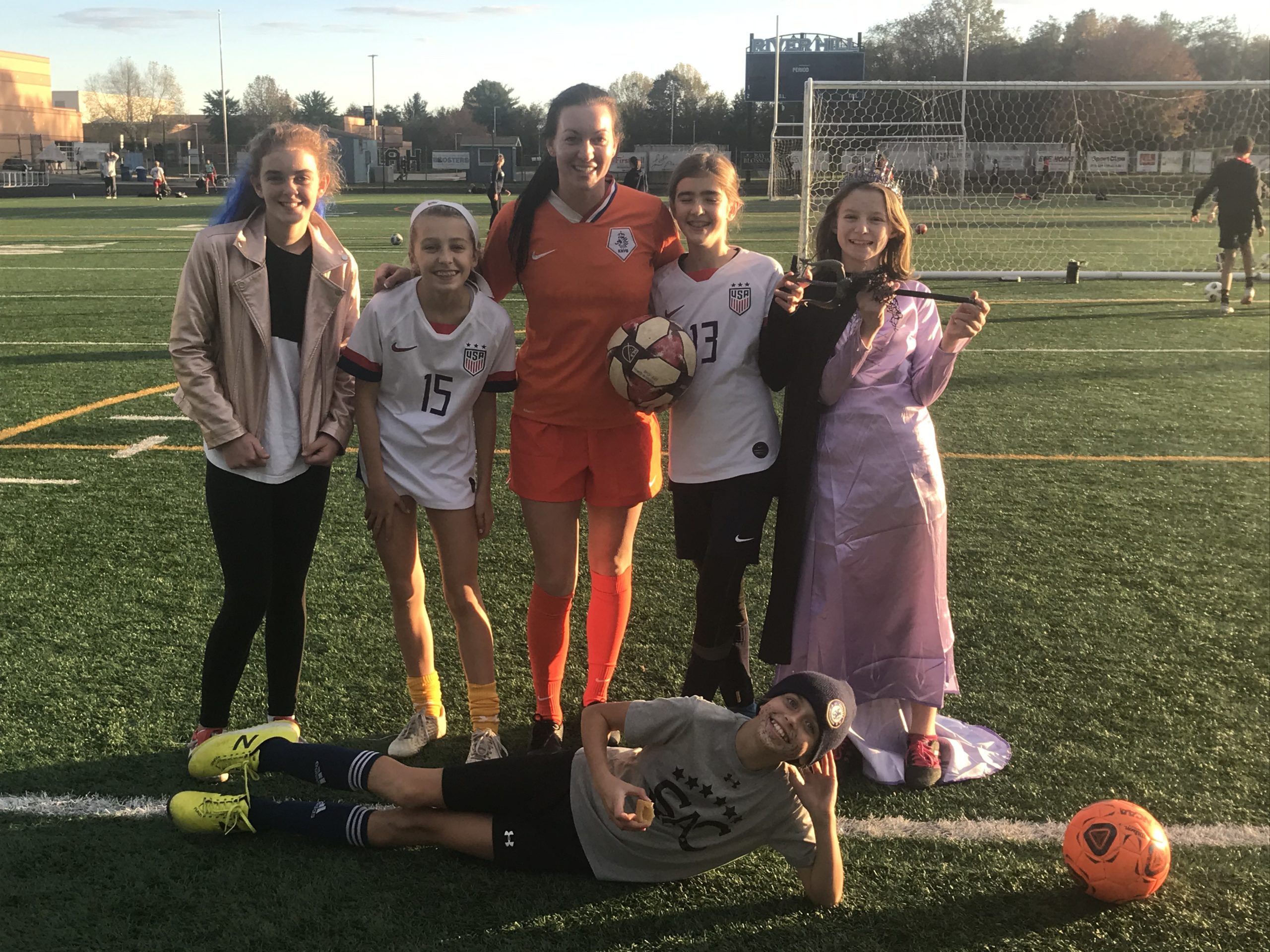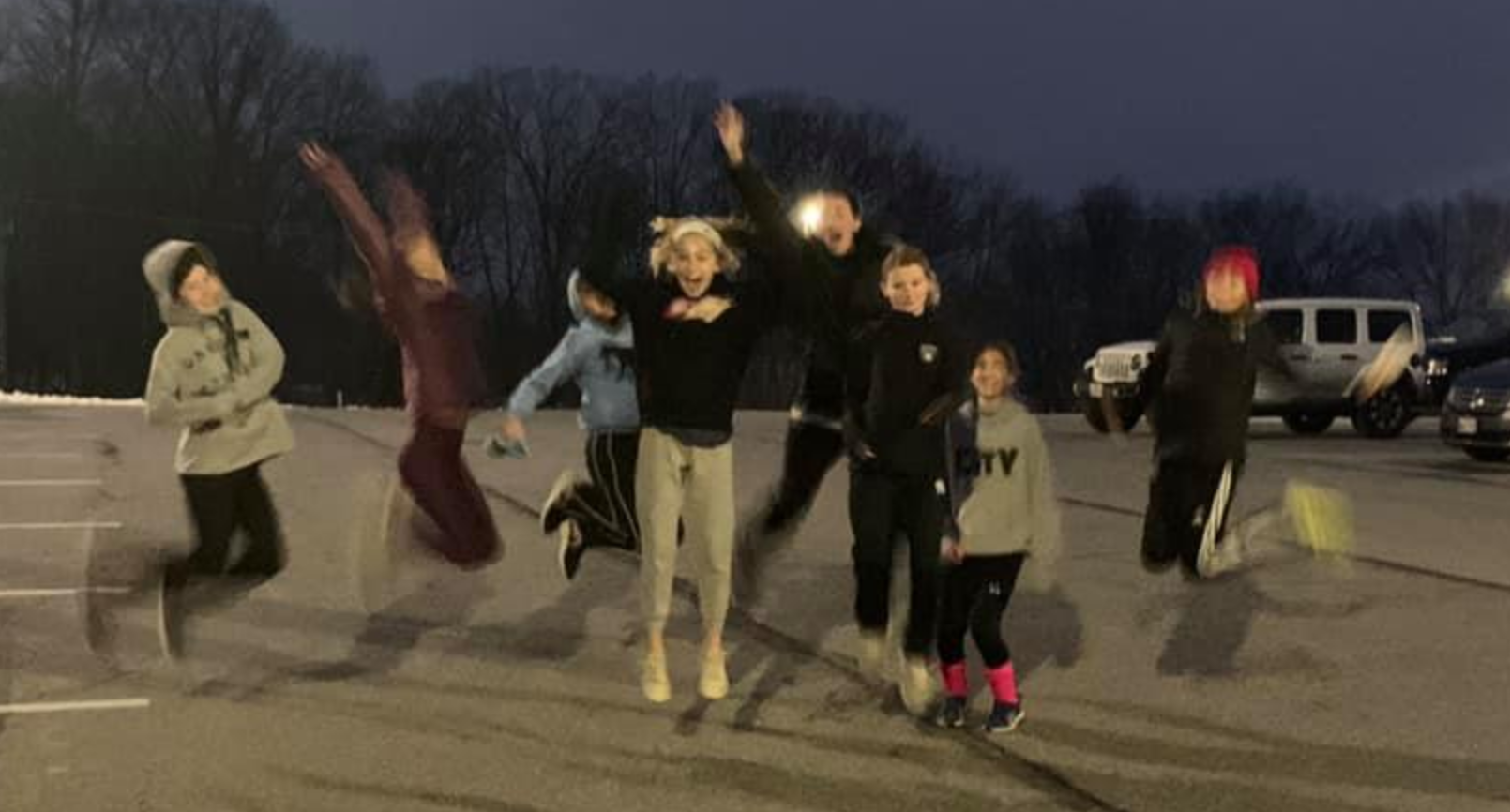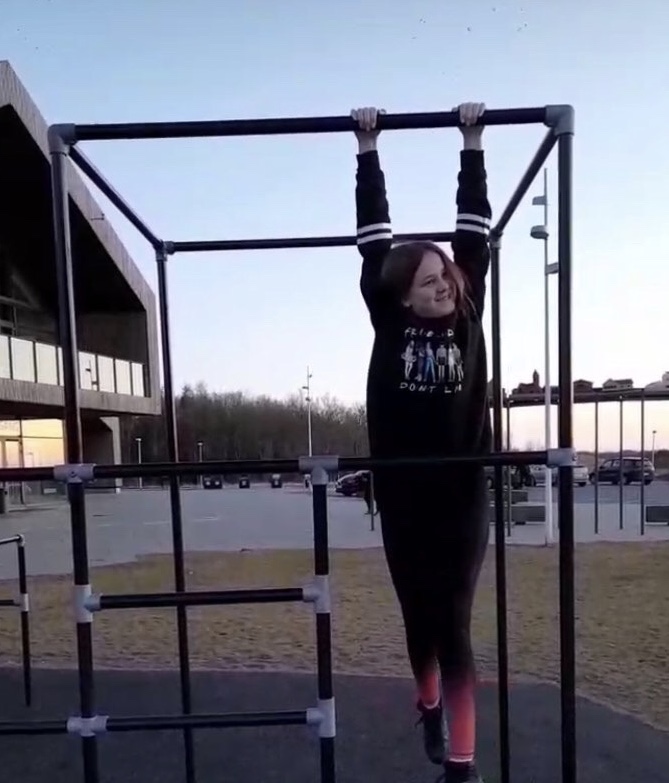
15 Mar Girls and Growth Spurts: How To Navigate
Being a youth sports parent is the toughest job in the world.
It’s up there with being King of the North.
It’s up there with being Beyonce.
It’s up there with being Frodo.
There’s an immense amount of pressure and you don’t want to screw up.
You want to make sure your child is having fun, learning the game, staying healthy, as well as blossoming into their strongest, fastest, and most mentally tough selves.
When they are young, sports are carefree.
Everyone is swarming the ball, picking dandelions, speed dribbling with beaming smiles, or scoring goals with exuberant cheers. There aren’t too many hurdles in the way because kids are immersed in their flow state. They’re not judging the past. They’re not anticipating the future. They’re simply being.
While this all sounds magical and all, the joy gets disrupted along the way.
It’s all fun and games and orange slices at halftime, until…
Your child hits their growth spurt.
I know, I know. It’s a dynamic time that presents a multitude of challenges, but don’t freak out.
I urge you, DON’T FREAK OUT.
Amidst the disruptions that arise, the good news is, there are a lot of things we can control to ensure young girls feel in their power during their growth spurt. Too, there are a few mindset shifts you can talk to them about so they are mentally confident and don’t play the victim during this time.
Let’s jump in.

What To Expect
When girls are 10-12 years old (with some beginning growth spurt at age 9), there are changes beyond the physical that occur. First and foremost, they might not think you’re as cool. They’re starting to change mentally and emotionally, and are susceptible to more oscillating and intense emotions as they develop their self identity and place in the world. This is critically important to be aware of when we have conversations about the physical changes happening, and we want to be cognizant not to use defeating language.
Full transparency, though, the physical changes are a laundry list.
Here we go:
– Decreased coordination
– Decreased balance
– Increased body fat
– Decreased control of momentum
– Decreased speed and agility
From a physiological standpoint, the structure of the hips is wider, fat mass increases in the chest area and around the hips, height is taller and torso is longer and center of mass is higher.
Re-read that again.
Wouldn’t you agree these changes are a big deal?
Wouldn’t you agree young girls are going through a lot physiologically and psychologically?
Wouldn’t you agree these changes are a lot for a pre-teenage girl to take on?
Wouldn’t you agree you need to empower them during this precarious time?
The growth spurt in young female athletes isn’t a time to for you to worry. Nor, is it a time for you to berate her for how there is so much wrong with her.
Rather it’s a time for you to equip her with the tools to empower herself and focus on the things she can control to stay healthy, enjoy sport, and be confident in her body.
The growth spurt in young female athletes isn't a time to for you to worry. Rather it's a time for you to equip her with the tools to empower herself and focus on the things she can control to stay healthy, enjoy sport, and be… Click To TweetWhat You Can Do
While we can’t control the wrath of nature and the physiological setbacks during this time, we can control several athletic qualities to ensure your female athletes are moving smoothly, confidently, and rapidly.
1. Coordination – reinforce this several times a week with marching, skipping, and crawling drills. These are the most basic skills that enhance speed as kids get older. The more coordination, the more rhythm and timing athletes possess for faster and more efficient running.
2. Variety of Motor Skills – this is everything that is done outside of organized sports. There has to be movement that allows young girls to get into various positions, some more challenging than their primary sport. This allows them to boost flexibility, improve body awareness, build coordination, and improve balance and posture.

“The definition of insanity is doing the same thing over and over again and expecting different results.” Young girls need a break from the year-round organized sports grind to sprinkle in training variability for bigger gains in their long term physical development.
3. Resistance Training – this is moving body in a controlled manner first, then progressing with load. Teach youth female athletes the squat, lunge, hinge, pull and push, then once they nail these down, they can begin to up the ante with weight.
A general rule of thumb I use when teaching girls strength movements for the first time, is SLOW DOWN. In order for a growing girl to optimize motor learning, she needs to feel each part of the movement and understand the muscle groups that are firing.
4. Mechanics – similar to teaching the strength movement patterns above, mechanics apply to teaching speed, deceleration, and change of direction. These mechanics are paramount because they will allow girls to control their momentum better, not fall forward on their toes and sway their shoulders, and they’ll be much more able to change direction quicker. For an in depth course on how to teach and a breakdown of biomechanics, check out TOTAL YOUTH FEMALE ATHLETE FITNESS HERE.
The Late Bloomer Considerations
When your child is a late bloomer, meaning they are behind 1-2 years in their physical development (biological age), this can be a frustrating time for the you and your kid.
Not only are they behind in their height and muscle, their speed is slow compared to their early bloomer peers. The first step when navigating the late bloomer process, is to move into acceptance of nature because this is something you cannot change. It sucks, I know, but does constantly complaining and talking about it to your kid help them be better? Taking the conversation back to the emotional changes during this time period, adding on the storm of late bloomer drawbacks doesn’t bode well for their brains. They already have the burden of all of the growth spurt disruptions to deal with.
So for the late bloomers, be sure to encourage them to hone in on their strengths (technical skills, agility, aggressive and grit). That reminds me, the majority of late bloomers develop an insatiable desire to work hard and play aggressive against the big kids. Find value in this. Because when they are older, their mindset is equipped with the resiliency to handle anything.
The Early Bloomer Considerations
Your girl is beating every to the ball. They’re outrunning and outplaying all of their opponents. Awesome.
While it’s an exciting time to see your kid grow tall and have a longer stride length, don’t let them get arrogant. Early bloomers still need to focus on their technical skills and not rely solely on their physical capability, otherwise the late bloomers catch up and are the ones surpassing the early bloomers in the high school years.
Keep this in mind.
Wrapping Up
The young female athlete growth spurt can be a frustrating time, but I encourage you to help turn it into an exciting time: inspire girls to work on the controllables, focus on their strengths, and nurture their weaknesses so they can be healthy, strong and fast as they mature.
GET THE STRONG FEMALE ATHLETE BOOK, A SCIENCE-BASED APPROACH TO REDUCE INJURY, IMPROVE PERFORMANCE AND INCREASE CONFIDENCE IN FEMALE ATHLETES HERE

More Resources on Training Youth Female Athletes
Total Youth Female Athlete Fitness Video Course and Exclusive Facebook Community


No Comments